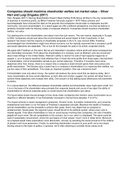Samenvatting
Complete summary of the midterm material of Finance 1 for business (Corporate finance)
- Instelling
- Universiteit Van Amsterdam (UvA)
Complete summary of the midterm material including the mandatory articles and chapters 1 to 8.
[Meer zien]





